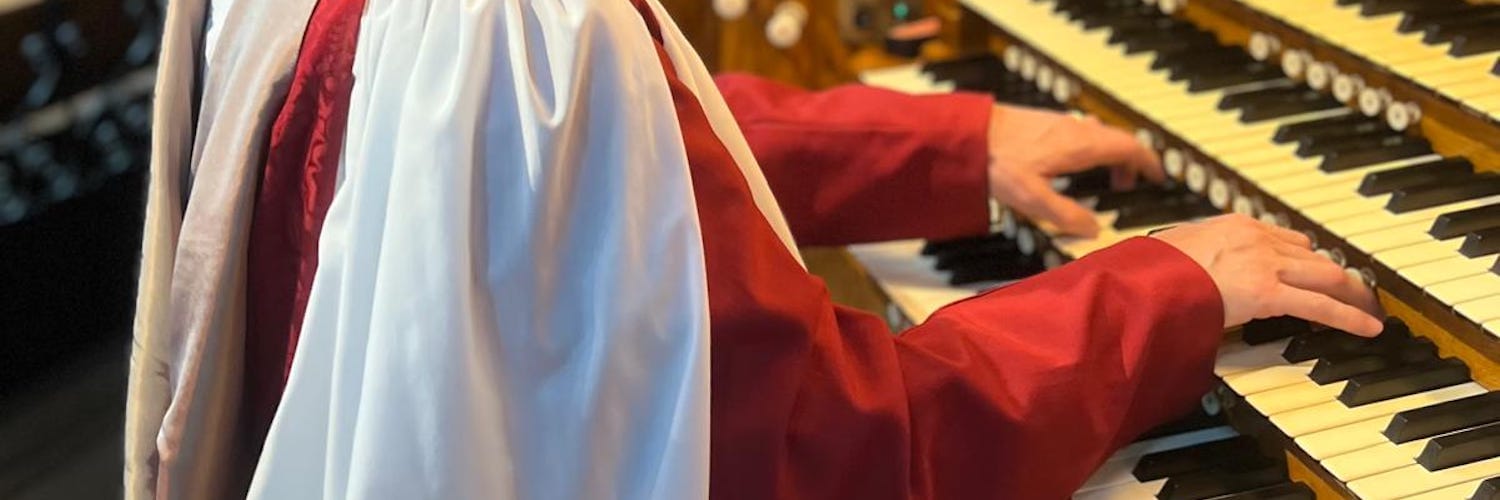
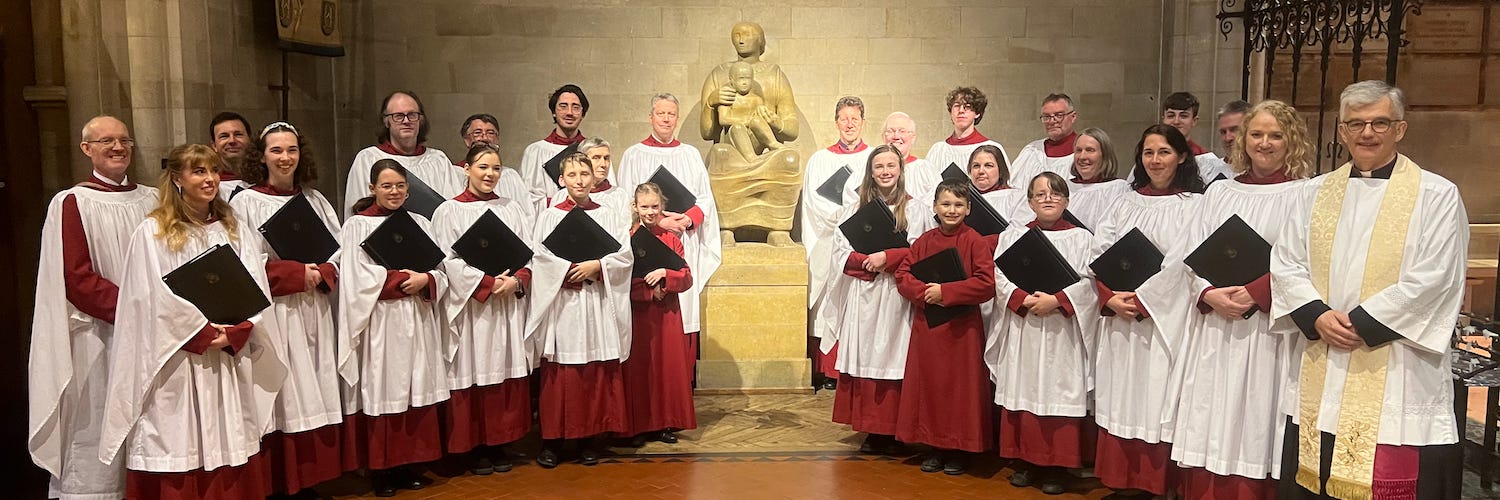
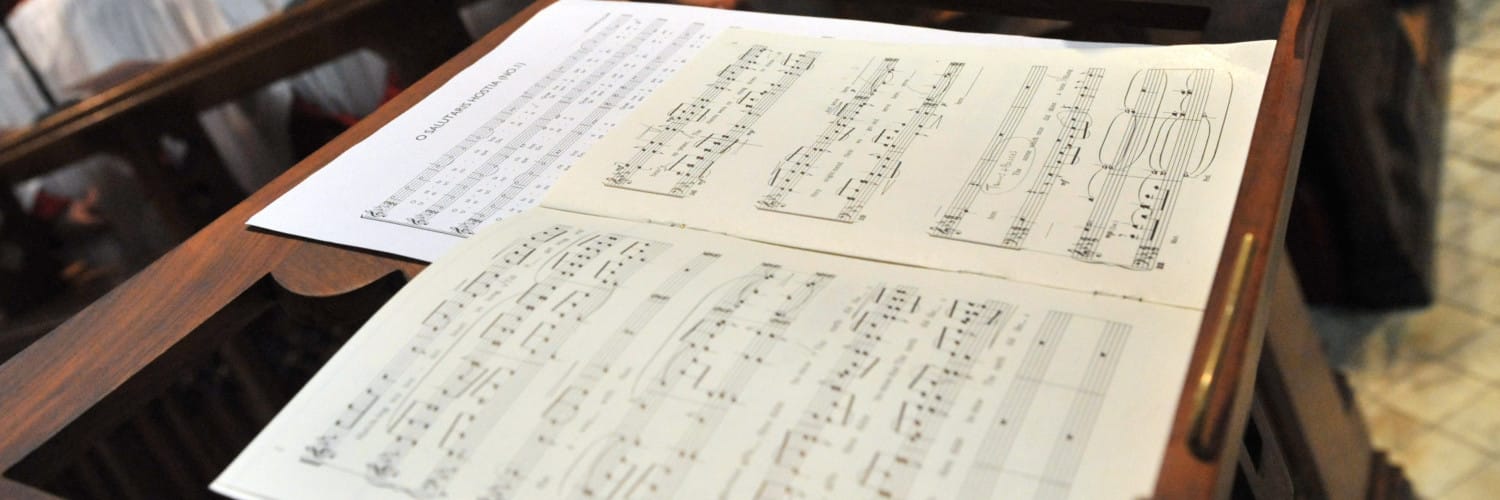
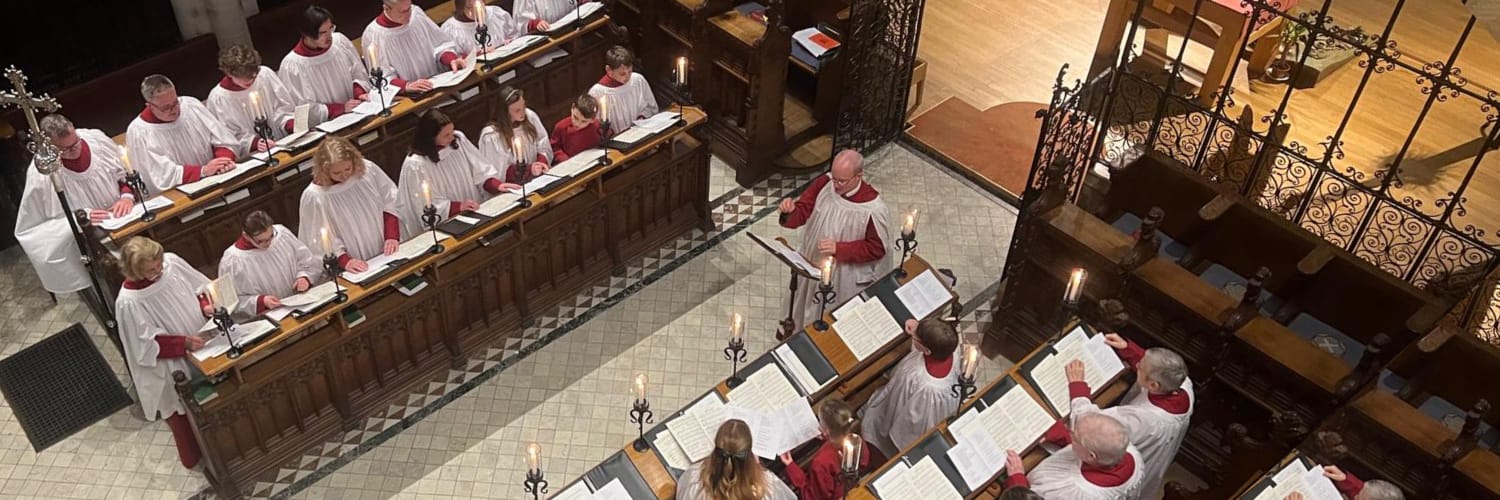
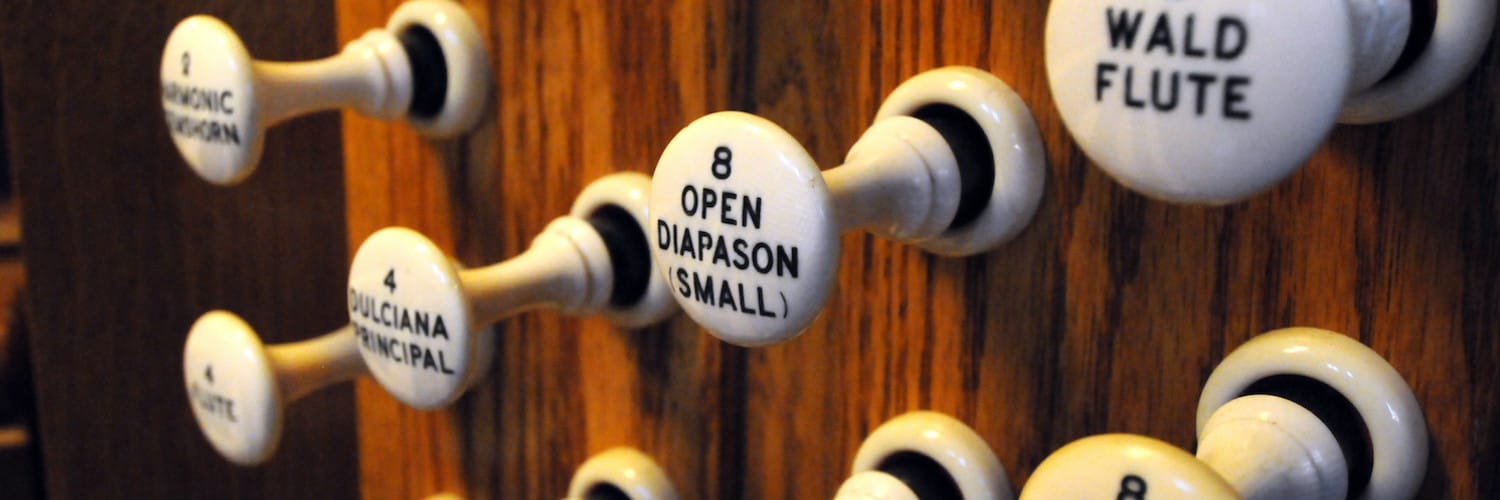
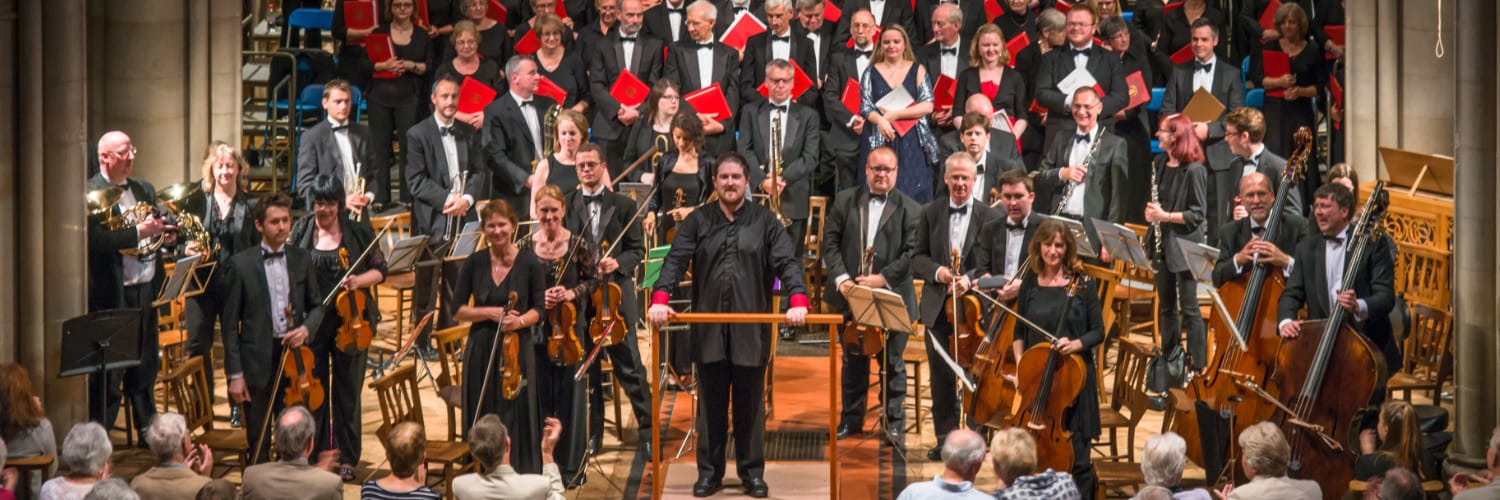
Music - The Carillon
The Carillon at St Matthew's Church
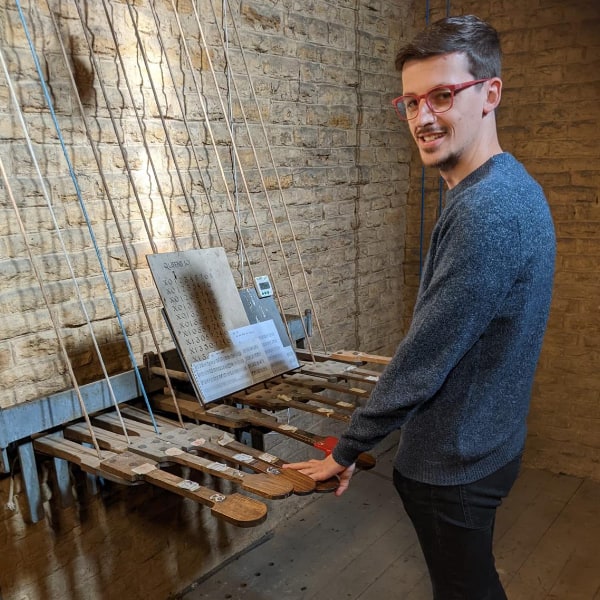
The twelve bells for the manually-operated carillon at St Matthew's were cast by James Barwell (Birmingham) in 1897, and the
installation was completed in 1898. Each bell has inscribed upon it (in Latin) the name of one of the twelve apostles. The
treble bell weighs 462 lbs (210 Kg), and the tenor bell weighs 1492 lbs (677 Kg).
Five of the bells are used by the church clock to strike the hours and chime the quarter hours (automatically).
The carillon is tuned to the key of F major, with a compass of one octave and a third, with the addition of a B natural and an E flat.
The instrument is maintained by John Smith & Sons (Derby).
It is used every Sunday morning before the 10.15am Mass, when the hymn tunes to be sung at the service are performed. At the
conclusion of wedding services (if requested), peals are played on it - using the same or similar sequences of notes as
those used in change-ringing. In the recent past, Auld Lang Syne was regularly performed at midnight to see the New Year in.
Appropriately selected music is also played on the carillon to attract attention to the start of events such as the Summer
Fete and the Christmas Fayre.
An Introduction to the Carillon
The term carillon (from 18th century French quadrillion meaning peal of four bells) applies to a set of fixed bells
played using a keyboard, or operated by an automatic mechanism (such as a pinned barrel). Manually operated
instruments can be played by just one person, who is known as a carillonneur.
This distinguishes the apparatus from traditional change-ringing (typical to the British Isles) where each bell is
swung around a horizontal axis, by the action of a pulled rope. Change-ringing requires a team of people, as each
person only operates one rope and its associated bell.
Externally sounded bells have always been associated with places of worship, and also used to warn the public of
fire or war, and to celebrate/signal civic events. The use of such bells in a musical fashion originated in the
16th century throughout the low countries, and was highly developed in Belgium and the Netherlands in particular.
Carillons are usually housed in church bell towers or municipal buildings, although there are travelling versions
which can be operated outside or inside (such as concert halls).
Technically speaking, a carillon should have at least 23 notes (according to the World Carillon Federation), and
an instrument with less is sometimes referred to as a chime. A concert instrument should have at least 49 notes.
The two largest carillons in the world (in terms of number of bells) are located at Kirk in the Hills, Michigan,
USA, and Hyechon College, Daejeon, South Korea - each boasting 77 bells.
Across the world, there are over 370 carillons, of which 200 are in Europe. Belgium alone has 89 instruments,
and the Netherlands has 34.
How the Carillon works
The keyboard is operated by striking or pushing down on the stick-like levers with the fists or palms of the hand. In some larger instruments (called carillon claviers), a pedalboard is incorporated which is operated by the feet of the player. By a series of ropes, wires, pulleys and levers, this movement actuates hammers which strike the inside of each bell. It is possible therefore to vary the intensity of the sound produced. Notes can be played individually in sequence to produce a melody, whilst in larger instruments especially it is possible to play notes together to produce chords.
Carillons in the United Kingdom and their manufacturers
Carillons in this country can be found at Kirk of St Nicholas, Aberdeen; St Patrick's Cathedral, Armagh; The Bournville
Carillon, Birmingham; St Patrick's Church, Dumbarton; The Guildhall, Kingston upon Hull; St Marnock's Church, Kilmarnock;
Atkinson's Carillon, Old Bond Street, London; The Loughborough Carillon; Manchester Town Hall; Newcastle upon Tyne Civic
Centre; Mostyn House School, Cheshire; St John's Kirk, Perth; Holy Trinity Church, St Andrews; Lowe House, St Helens;
Our Lady of the Rosary & St Therese of Lisieux RC Church, Saltley; South Holland Centre, Spalding; The Anglican Shrine
of Our Lady of Walsingham; The Wisbech Institute; and York Minster.
Notable manufacturers in the United Kingdom include Gillett & Johnston (South Croydon), John Smith & Sons (Derby), John
Taylor & Sons (Loughborough), and the Whitechapel Bell Foundry (London).
Information Quick Links



Join our Mailing List
To receive our email newsletter regarding the latest news and upcoming events at St Matthew's, kindly provide us with your name and email address below. By opting in and subscribing, you'll stay informed about our community, special services, insightful articles, and other valuable content.
Connect with us
Please show your support by following and subscribing to our church and choir social media channels, where you can find inspiring content, updates on our events and services, live streamed services, and uplifting messages.







